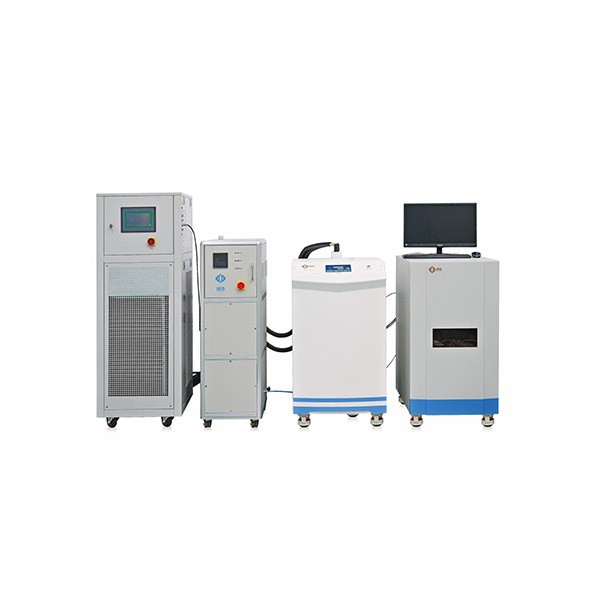NMR cryoporometry-low field NMR
NMR cryoporometry (NMR-C) is an emerging pore characterization technology that can cover the test range of nanopores, can achieve continuous measurement of the same sample, and can directly and efficiently obtain pore size distribution, porosity, and other information. The test process has little disturbance to the sample and has shown great potential in the study of nanopores in low permeability media such as shale, which can complement other pore characterization techniques.
Framework diagram of NMR cryoporometry system
The NMR cryoporometry freezing pore measurement method uses NMR signals under variable temperature conditions to characterize the phase change process of the liquid in the pores of porous media with temperature. Based on the phase change theory of restricted materials, the porosity, pore size distribution and other properties of porous materials are analyzed. In-depth study.
The essence of the NMR freezing method is to characterize the pore structure characteristics by using the difference in NMR relaxation properties of fluids and liquids. In the actual measurement process, a certain liquid (usually a wetting liquid) is first saturated and filled into the porous solid material to be measured, and the temperature is changed through the cooling device equipped with the instrument to measure the amount of liquid change in the corresponding phase change process. To obtain the melting (or solidification) curve and analyze the relevant information of the pores.
The figure depicts the phase change process of the material in the pores of the porous material. As the temperature rises, the liquid (water) in the pores gradually begins to melt from small pores to large pores, and the liquid substance in the material gradually increases. According to the Gibbs–Thomson equation, the process of increasing the total liquid content with increasing temperature can be regarded as the cumulative process of pore volume from small pores to large pores, so the accurate measurement of the volume of the liquid during the temperature change of the porous material can obtain the pore size distribution of the material.
Phase transition behavior of substances in porous materials
The conventional NMR relaxation method cannot reflect the absolute pore diameter of the pores, and the coefficient conversion is required to obtain the pore diameter distribution. The NMR freezing hole measurement method not only has the advantages of conventional NMR technology, but also improves the test accuracy of micropores and mesopores, and the test range can also meet the needs of low permeability shale.
NMR cryopore measurement is a pore structure characterization method with great research significance and application value. At present, NMR-C has been widely used in the study of mesoporous silica, biological cells, wood and other materials, and in shale the pore characterization of other rocks also has broad application prospects.
Comparison of shale pore size distribution results with different characterization methods
Compared with traditional methods, the advantages of NMR cryopreservation method in the study of nano-medium pores can be summarized as follows:
(1) This method can better characterize the nano porous structure than mercury intrusion method and nitrogen adsorption method and can be tested in an aqueous environment.
(2) NMR-C uses NMR technology to directly obtain information in the pores, which reduces the damage to the pore structure and makes the test process more direct and faster.
(3) By changing the shape of the sample and using the capillary and diffusion of the fluid, NMR-C can obtain closed-pore information, which can be used for the comparative study of the effective porosity and total porosity of low-permeability media.
Recommended instrument: NMR cryoporometry nanoporosity analyzer benchtop nmr NMRC12-010V
 NIUMAG
NIUMAG



